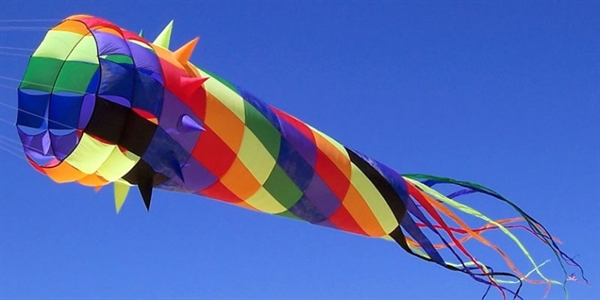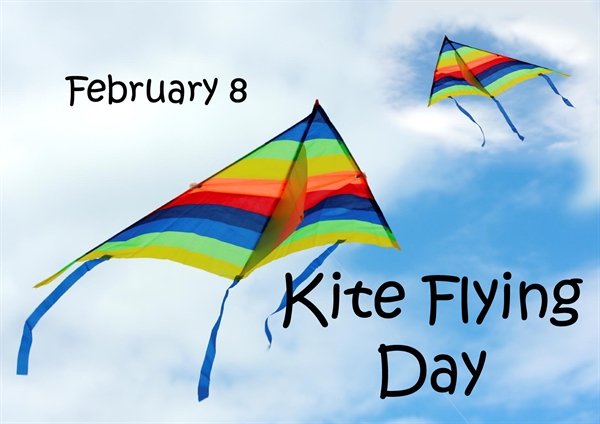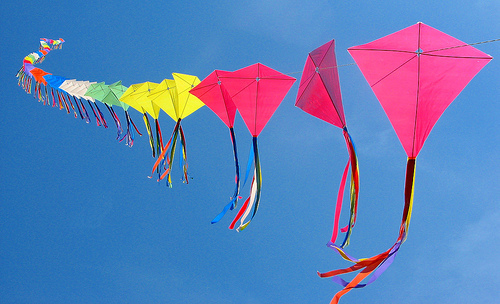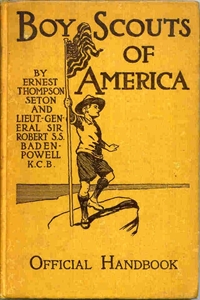Kite Flying Day 2025 is on Saturday, February 8, 2025: What's better than flying a kite on a sweet, summer's day?
Saturday, February 8, 2025 is Kite Flying Day 2025. February 8 - Kite Flying Day Kite Flying Day
As an Amazon Associate I earn from qualifying purchases.

Look for a sunny, public open place, and participate in with Kite Flying Day! Have a have a picnic towards the park and obtain competitive, seeing who are able to fly the greatest, the quickest, and also the most delicately!

Flying a kite on a summer day while laying together with you hugging and kissing and having a picnic

Kite flying problem Sad children :(?
Professor Kite and the Secret of Kites
Kite Flying is great fun and it's easy if you know some of Professor Kite's secrets. So grab your kite and join in the fun. The sky is big enough for EVERYONE!
The first thing you need to do is pick a kite. Deltas, Diamonds and Dragon kites fly well in light to medium winds (approximately 6-15 mph) while Box Kites and stickless Parafoil kites fly better when the winds get a little stronger (approximately 8-25 mph).
Fliers carry different types of kites for different winds. Kitefliers enjoy the different experiences each type offers. Be sure your kite is put together correctly, or it may not fly.
--------------------------------------------------------------------------------
Professor Kites General Rules for Picking Kite Days:
Because we don't control the wind, we learn to watch for the right kite flying conditions.
Wind that is too strong or too light is difficult to fly in. A flag or windsock is handy to help you see the wind. About 5-25 mph is best for most kites (when leaves and bushes start to move, but before it really starts to blow).
Flying is most fun when the wind is medium so you can do more than just hold on. You can make your kite dance across the sky by pulling in and letting out the line.
Flying Space should be a clear, open area. Stay away from roads, power lines or airports. Open fields, parks and beaches are great for flying kites. The more room you have, the more line you can let out.
Remember that as the wind goes over and around trees and buildings, it gets bumpy and difficult to fly kites in. Watch out for kite eating trees!
No Storms: Never fly in rain or lightening. Electricity in clouds is attracted to damp kite lines and foolish kite fliers.
Experiment! - Fly Safe! - Have Fun!
--------------------------------------------------------------------------------
Professor Kite Explains "How to Get Your Kite to Fly"
Kiters know that a kite has no "spirit" until it has been flown. Even if your kite is only for decoration, it should be flown at least once.
--------------------------------------------------------------------------------
Single Line Kites:
Stand with your back to the wind. Hold your kite up by the bridle point and let the line out. If there is sufficient wind, your kite will go right up. Let the kite fly away from you a little, then pull in on the line as the kite points up so it will climb. Repeat this until your kite gains the altitude necessary to find a good steady wind.
Light Wind? Have a helper take the kite downwind and hold it up. On command, the helper releases the kite and the flier pulls the line hand-over-hand while the kite gains altitude. Practice this high-launch technique.
No Helper? Prop the kite up against a bush, post, or wall. Reel out enough line for altitude and simply pull the kite aloft.
If the kite sinks tail first, there might not be enough wind. If it comes down head first or spins, there might be too much wind. Different kites fly in different winds.
Bridles: If your kite has an adjustable bridle, move it higher (nearer the top) in higher winds, and lower (towards the tail) in lower winds. (Adjust no more than 1/2" at a time.)
Tails: Adding tails to your kite helps it remain stable in stronger winds. Use light-weight materials so you can use lots! Looks great!
--------------------------------------------------------------------------------
Acrobatic Sport Kites:
The Safest Start: Lay out your stunter and lines completely before you launch. Check all connectors, unsnarl and straighten lines and tails.
Check the Bridles: Be sure they are adjusted correctly for the present conditions. Also make sure that they are balanced in the same position on the right and left sides of the kite.
Enough line? Use at least 60' - 100' - so you have enough time to react. Be sure your flying lines are even. If one line is shorter, your kite will think you are pulling on that line and spin in that direction.
To Launch: Step backwards and pull both handles to your side. Be sure to check behind you for obstructions or hazards before backing up.
Control: Pull the left line to make the stunter turn left. Pull the right line to turn right. Hold them even to fly straight. Try not to over-control. Learn to "fly loops" instead of just spinning tight circles.
Lift and Speed: The more to the side of the wind the stunter flies, the less lift and speed it has. While learning to fly, keep the stunter downwind. As you get better, explore the more subtle levels of performance.
Safety: Always stay away from spectators or passers-by. You are responsible for the safe operation of your stunter. Sport Kites should never be flown in crowded areas.
--------------------------------------------------------------------------------
Professor Kite's Helpful Hints
(and a few common sense safety rule

anyone here into kite flying?
kites are awesome yes, i love kites!!













